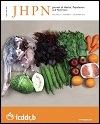Identifying Predictors of Childhood Anaemia in North-East India
DOI:
https://doi.org/10.3329/jhpn.v31i4.20001Keywords:
Anaemia, Multiple logistic regression, Odds ratio, Wald Test statistic, IndiaAbstract
The objective of this study is to examine the factors that influence the occurrence of childhood anaemia in North-East India by exploring dataset of the Reproductive and Child Health-II Survey (RCH-II). The study population consisted of 10,137 children in the age-group of 0-6 year(s) from North-East India to explore the predictors of childhood anaemia by means of different background characteristics, such as place of residence, religion, household standard of living, literacy of mother, total children ever born to a mother, age of mother at marriage. Prevalence of anaemia among children was taken as a polytomous variable. The predicted probabilities of anaemia were established via multinomial logistic regression model. These probabilities provided the degree of assessment of the contribution of predictors in the prevalence of childhood anaemia. The mean haemoglobin concentration in children aged 0-6 year(s) was found to be 11.85 g/dL, with a standard deviation of 5.61 g/dL. The multiple logistic regression analysis showed that rural children were at greater risk of severe (OR=2.035; p=0.003) and moderate (OR=1.23; p=0.003) anaemia. All types of anaemia (severe, moderate, and mild) were more prevalent among Hindu children (OR=2.971; p=0.000), (OR=1.195; p=0.010), and (OR=1.201; p=0.011) than among children of other religions whereas moderate (OR=1.406; p=0.001) and mild (OR=1.857; p=0.000) anaemia were more prevalent among Muslim children. The fecundity of the mother was found to have significant effect on anaemia. Women with multiple children were prone to greater risk of anaemia. The multiple logistic regression analysis also confirmed that children of literate mothers were comparatively at lesser risk of severe anaemia. Mothers age at marriage had a significant effect on anaemia of their children as well.
DOI: http://dx.doi.org/10.3329/jhpn.v31i4.20001
J HEALTH POPUL NUTR 2013 Dec; 31(4): 462-470
Downloads
2746
994

